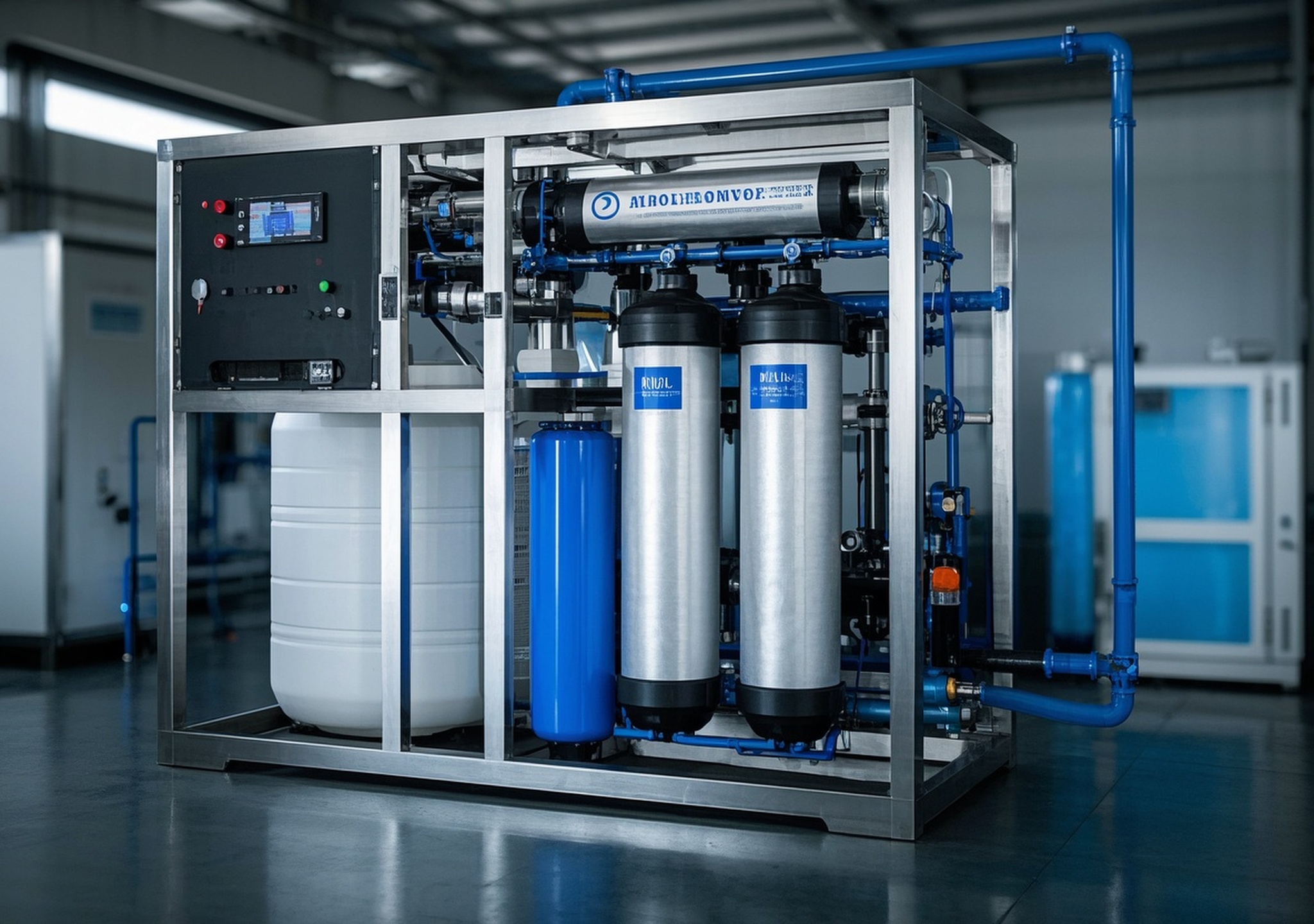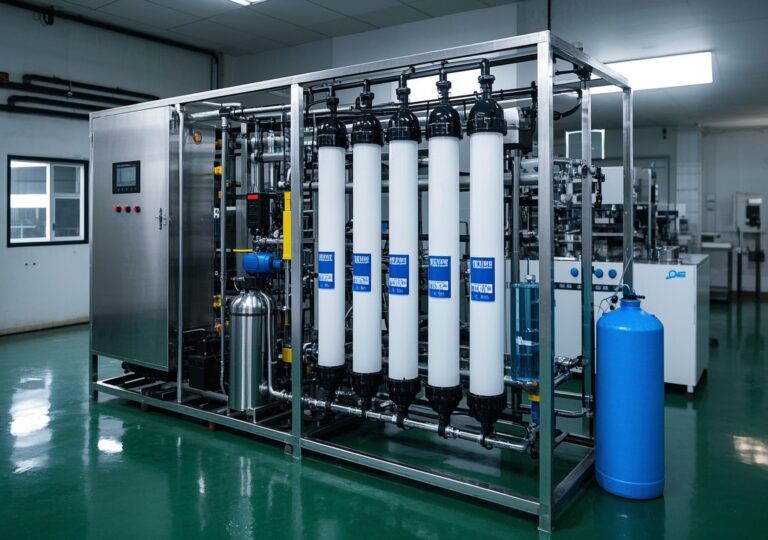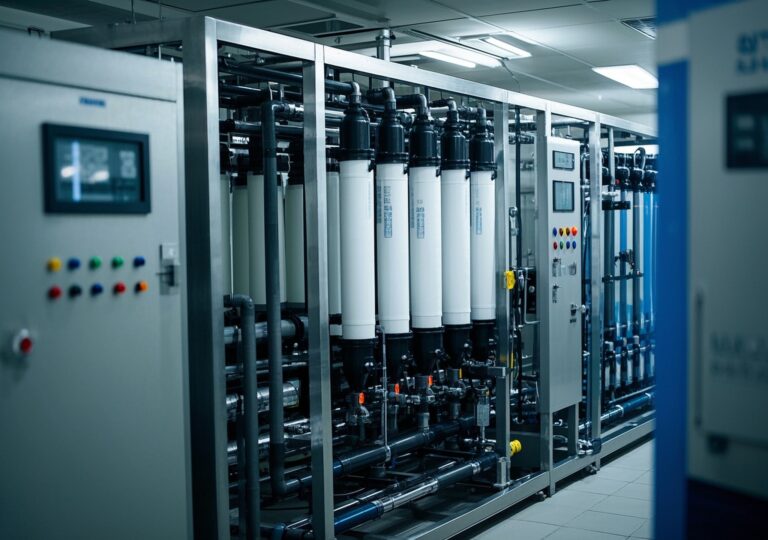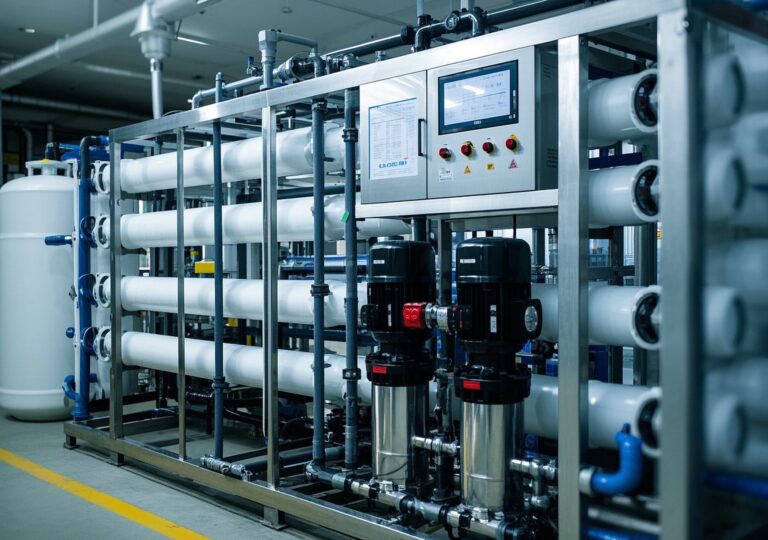Expert Analysis: Boost RO Efficiency with a Whole House Ultrafiltration System

Expert Analysis: Boost RO Efficiency with a Whole House Ultrafiltration System
In modern water treatment and purification processes, Reverse Osmosis (RO) systems are widely utilized for their high efficiency in removing dissolved solids, contaminants, and pathogens. However, maintaining the peak performance and longevity of RO membranes requires effective pre-treatment solutions. Integrating a whole house ultrafiltration system as a pre-treatment step has emerged as a strategic method to enhance RO efficiency, reduce operational costs, and ensure water quality compliance across diverse industries.
1. Introduction: Understanding RO Water Treatment and Its Industrial Significance
Reverse Osmosis is a membrane-based filtration technology that selectively separates contaminants from water by applying pressure to push water molecules through a semi-permeable membrane. RO finds essential applications across food and beverage production, pharmaceuticals, hospitals, textile processing, and commercial facilities where ultrapure water is critical.
Despite its effectiveness, raw feed water quality highly influences RO performance. Particulate matter, suspended solids, and microbial contaminants can clog membranes, increase fouling rates, and escalate maintenance expenses. A whole house ultrafiltration system pre-filters feedwater by removing particles as small as 0.01 microns, including bacteria and viruses, thereby safeguarding the RO membranes and optimizing the entire water treatment cascade.
2. Overview and Performance Advantages of Whole House Ultrafiltration Systems
Whole house ultrafiltration (UF) systems operate at the point of entry (POE) to the building’s water supply, effectively treating all incoming water before distribution or further purification. These systems utilize polysulfone or ceramic membrane modules that provide robust filtration, removing suspended solids, turbidity, and microorganisms without altering water chemistry.
Key performance advantages include:
- High filtration precision: Captures particles down to 0.01 microns, including pathogens.
- Consistent flux rates: Maintains steady flow, ensuring sufficient volume for downstream processing.
- Membrane durability: Designed for long lifespan under variable water conditions.
- Energy-efficient operation: Lower operational pressures relative to RO allow cost savings.
- Reduced chemical usage: Less need for aggressive pre-treatment chemicals minimizes chemical footprints.
According to a 2023 report from Straits Research on the Home Water Filtration Systems Market Size and Outlook 2031, the whole house filtration segment commands the largest market share, reflecting both the prevalence and importance of these systems in residential and commercial settings. The segment’s CAGR of 8.12% highlights growing adoption driven by awareness of water safety and efficiency improvements.
3. Process Flow of Integrating Ultrafiltration with RO Systems
The typical water treatment chain incorporating whole house ultrafiltration before RO involves several carefully staged processes:
| Stage | Description | Purpose |
|---|---|---|
| Raw Feed Water | Source water enters the treatment system. | Initial water supply which may contain particulates, organics, and microbes. |
| Pre-Filtration (Whole House UF) | Ultrafiltration membranes remove suspended solids, turbidity, bacteria, and viruses. | Protects downstream RO membranes from fouling and biofouling. |
| High-Pressure Pumping | Water pressurized to 150-400 psi, feeding the RO membranes. | Ensures sufficient pressure to overcome osmotic pressure and drive filtration. |
| RO Membrane Filtration | Removal of dissolved salts, heavy metals, organics. | Generate high-purity permeate water meeting stringent quality. |
| Post-Treatment | May include UV sterilization, pH adjustment, or remineralization. | Enhances water safety and suitability for end use. |
This sequential structure allows each technology to focus on its strength: ultrafiltration eliminates larger fouling agents, providing cleaner feedwater to RO membranes, thereby extending membrane life and reducing cleaning frequency.
4. Key Components and Their Roles in the Treatment Chain
Understanding the individual function of key components clarifies system optimization and maintenance priorities:
- Multimedia Filters: Often installed before UF membranes, these remove large particulates (>50 microns), protecting membranes from abrasion and clogging.
- Activated Carbon Filters: Adsorb chlorine and organic contaminants that could degrade membranes or affect taste and odor.
- Water Softeners: Reduce hardness ions such as calcium and magnesium that cause scaling on membranes.
- High-Pressure Pumps: Provide stable, adjustable pressure necessary for RO membrane operation.
- UF Membrane Modules: Hollow fiber or flat-sheet membranes that trap particles, bacteria, and viruses with high precision.
- RO Membranes: Thin-film composite membranes that remove dissolved salts and contaminants.
Each component’s quality and sizing have direct implications on system throughput, water quality, and operational expenses.
5. Membrane Technology Features and Maintenance Recommendations
Membranes are the heart of purification technology but require diligent maintenance for peak performance. Key membrane types and considerations include:
- UF Membranes: Feature pore size typically between 0.01-0.1 microns, excellent for pathogen removal and turbidity reduction. Cleaning involves periodic backflushing and chemical clean-in-place (CIP) using compatible detergents.
- RO Membranes: Thin-film composite membranes with salt rejection rates exceeding 99%. Sensitive to chlorine and particulate damage; require pre-treatment and regular CIP to avoid fouling and scaling.
Routine integrity testing, feedwater quality monitoring, and adherence to manufacturer’s cleaning protocols are essential. Membrane lifespan can be extended up to 3-5 years with proper care, representing considerable cost savings.
6. Post-Treatment Technologies for Enhanced Water Quality
After RO, additional treatment steps tailor water quality for specific applications:
- Mixed Bed Deionization (MBDI): Removes residual ions to reach ultrapure water standards needed in pharmaceuticals or microelectronics.
- Electrodeionization (EDI): A chemical-free method combining ion exchange and electric current to continuously regenerate resins, reducing operational costs and waste production.
- Ultraviolet (UV) Sterilization: Provides disinfection against viruses and bacteria ensuring microbiological safety.
- Remineralization: Adjusts pH and adds essential minerals improving taste and corrosion control.
These complementary technologies ensure delivered water meets or exceeds industry-specific regulatory requirements.
7. Industry Use Cases Illustrating Effectiveness of Ultrafiltration and RO Integration
Food & Beverage: In a brewery I consulted for, integrating a whole house ultrafiltration system significantly lowered suspended solids in feedwater by 98%, reducing frequent RO membrane replacements and cutting maintenance downtime by 30%. This enabled consistent taste profiles and reduced production loss.
Pharmaceutical Manufacturing: A regional pharmaceutical facility implemented UF pretreatment before RO to comply with USP water for injection standards. The system reliably protected RO membranes from biofouling, ensuring uninterrupted production and regulatory compliance.
Hospital Water Systems: In hospital water purification projects, whole house UF systems prevent microbial contamination effectively before RO treatment, protecting patients reliant on dialysis and laboratory testing water integrity.
Commercial Hospitality: Hotels incorporating these systems observed improved water clarity and odor reduction, enhancing guest satisfaction and reducing chlorine-related complaints.
8. Factors Influencing Pricing and Return on Investment (ROI)
Investing in a combined whole house ultrafiltration system and RO setup involves multiple cost components:
| Factor | Impact on Cost | ROI Implications |
|---|---|---|
| Component Quality | Higher-grade membranes and pumps raise upfront costs but reduce maintenance. | Fewer replacements and downtime improve long-term savings. |
| Customization Level | Tailored system design to specific water chemistry or flow requirements increases complexity and cost. | Better water quality control yields operational benefits. |
| Operational Expenses | Energy, chemical use, and labor cost vary by system efficiency. | Energy-efficient UF reduces power bills, enhancing ROI. |
| Financing Options | Leasing or loans impact initial capital outlay. | Spreads cost for manageable investment while enabling early benefits. |
Evaluating total cost of ownership versus benefits such as membrane longevity, reduced downtime, and product quality improvements is essential for sound investment decisions.
9. Installation and After-Sales Support Considerations
Successful implementation requires thorough pre-installation analysis of site water conditions, infrastructure, and operational objectives. Key installation steps include:
- Site assessment and space planning
- Proper plumbing connections and structural support
- System startup with pressure testing and leak checks
- Initial performance validation and water quality testing
- Operator training on routine operation and troubleshooting
Robust after-sales service comprising routine maintenance agreements, technical support hotlines, and prompt spare parts delivery ensures system reliability over lifespan.
10. Maintenance Protocols and Common Troubleshooting Tips
Regular maintenance extends system life and prevents unplanned failures:
- Periodic membrane integrity testing using pressure and permeability checks
- Scheduled chemical cleanings based on feed water turbidity and fouling indicators
- Monitoring feedwater parameters such as turbidity, chlorine, and hardness
- Promptly replacing filters and membranes showing irreversible decline
- Addressing flow rate drops and pressure increases by inspecting for scaling or biological build-up
Common issues include membrane fouling due to inadequate pre-treatment, pressure pump failures, and valve leaks. Consistent record-keeping facilitates trend analysis and proactive maintenance programming.
11. Manufacturer Landscape and Market Positioning
The global market for ultrafiltration and RO water treatment systems is robust and competitive, characterized by manufacturers with diverse certifications such as NSF/ANSI 42 and 53 ensuring safety and performance compliance. Leading players focus on continuous membrane technology innovation, customized engineering, and scalable solutions for different sectors.
Market reports forecast steady growth due to rising industrial water treatment demands, ensuring availability of advanced solutions accessible worldwide.
12. Conclusion and Call to Action
Integrating a whole house ultrafiltration system as a pre-treatment step before Reverse Osmosis significantly boosts system efficiency, membrane lifespan, and overall water quality. Supported by authoritative market data and proven field experiences, this approach is a prudent choice for industries seeking reliable, cost-effective, and high-quality water treatment solutions.
For organizations committed to sustainable water management and operational excellence, adopting such integrated ultrafiltration-RO systems represents a strategic investment. Engaging with water treatment experts to assess specific site requirements will enable tailored solutions maximizing return on investment and compliance with evolving water safety standards.
References and Data Sources
- Straits Research. “Home Water Filtration Systems Market Size, Comprehensive Industry Demand, Outlook 2031”
- Grand View Research. “Ultrafiltration Market Size & Share | Industry Report, 2030”
- MarketsandMarkets. “Home Water Filtration Systems Market Report 2025 (Global Edition)”




